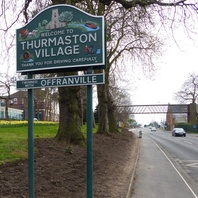
Viking Names
Thurmaston
Thurmaston, in the East Goscote Hundred of Leicestershire, is an Anglo-Scandinavian hybrid from the common Old Norse male personal name Þormóðr and Old English tun ‘an enclosure; a farmstead; a village; an estate’. A few thirteenth and fourteenth century spellings of Thurmaston seem influenced by the Old Norse male personal name Þormundr. A large pagan, Anglian cemetery has been discovered here, no doubt that of an important early settlement site preceding Scandinavian appropriation.
Read More
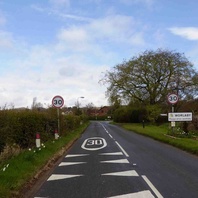
Viking Names
Worlaby
Worlaby, in the Yarborough Wapentake of Lincolnshire, is a hybrid name coming from the Old English male personal name Wulfric and Old Norse by ‘farm, settlement’, identical with Worlaby in the Hill Wapentake of Leicestershire, now a lost village. The two Domesday book spellings in Ulu- are presumably Scandinavianised forms.
Read More
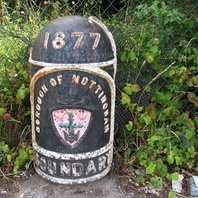
Viking Names
Nottingham
Nottingham is one of the Five Boroughs of the Danelaw. The place-name is comprised of three Old English elements: the male personal name Snot, ingas ‘people of, the people called after’ and ham ‘a village, a village community, a manor, an estate, a homestead’. Thus the name means ‘Homestead/village of Snot’s people’. It is likely that the same man or people gave his name to the adjacent Sneinton. There is an older British name for Nottingham, Tigguocobauc ‘house of caves, cavy house’, alluding to the sandstone caves of Castle Hill. However, there is no other record for this name outside of Asser’s reference for 868. According to the Anglo-Saxon Chronicle, Nottingham was occupied by the Great Heathen Army in 867 and remained under Scandinavian control until 918, when it was occupied by Edward the Elder. The influence of these Vikings can be seen in the city of Nottingham’s street names. The Old Norse element gata ‘path, way, road’ can be found in street names such as Barker Gate ‘street of the barkers or tanners’, Castle gate ‘street leading to the castle’, and Fisher Gate ‘street of the fishermen’.
Read More
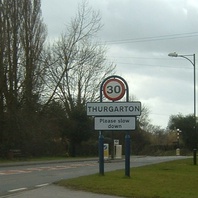
Viking Names
Thurgarton
Thurgarton, in the Thurgarton Wapentake of Nottinghamshire, comes from the Old Norse male personal name Þorgeirr (though in an anglicised form Þurgar) and the Old English element tun ‘farm, settlement’, and is thus a hybrid name.
Read More
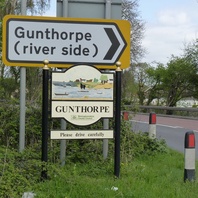
Viking Names
Gunthorpe
Gunthorpe, in the Thurgarton Wapentake of Nottinghamshire, comes from the Old Norse female personal name Gunnhildr and the Old Norse element þorp ‘outlying farm/settlement’.
Read More

Viking Names
Sturston
Sturston, in the Appletree Hundred of Derbyshire, comes from the Old Norse male personal name Stýrr and the Old English element tun ‘farm, settlement’. It is thus a hybrid name. The Domesday Book mentions Sturston Hall as one of two manors held by Ulfkil ‘Ulfkell’ and Wudia ‘Wodi’, each manor being of half a carucate (a Danish land measure) each. Parts of the parish were transferred to Bradley and Offcote and Underwood and the rest to Ashbourne in 1934.
Read More
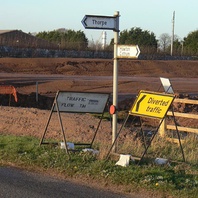
Viking Names
Thorpe
Thorpe, in the Newark Wapentake of Nottinghamshire, is simplex name from Old Norse þorp ‘a secondary settlement, a dependent outlying farmstead or hamlet’. Probably regarded as an outlying settlement from Newark.
Read More
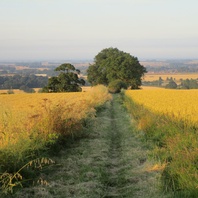
Viking Names
Hawerby
Now joined with Beesby, Hawerby is in the Haverstoe Wapentake of Lincolnshire, which has also been joined with Bradley Wapentake to form Bradley Haverstoe Wapentake. The name comes from an Old Norse male personal name Hávarðr plus the Old Norse element by ‘farmstead, village’. Interestingly, the same personal name is found in the wapentake name, Haverstoe, which combines it with the Old Norse element haugr ‘mound’. As Kenneth Cameron put it, ‘the coincidence is too great to avoid the conclusion that both are named from the same man. The site of the wapentake meeting-place is almost certainly a mound in the parish of Hawerby’. It has been suggested that the mound in question is a prehistoric round barrow (of which there is little or no trace today, as a result of ploughing) at TF 254 977, which has a fine view of the Humberside levels.
Read More
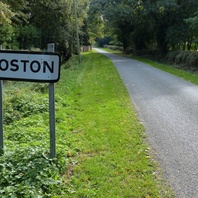
Viking Names
Foston
Foston, in the Appletree Hundred in Derbyshire, has a difficult naming history. The form of the name in Domesday Book, Farvlvestvn, seems to be from the Old Germanic male personal name Farulf with the second element Old English tun ‘farm, settlement’. It is believed that Foston, from the Old Scandinavian male personal name corresponding to the Old Norse male personal name Fótr, was originally a separate settlement site which in the course of time became more important than Farvlvestvn and displaced this name. Alternatively, the name Farulfr was common in Swedish and the first element in the Domesday form of this place-name may well be this Scandinavian name. Foston is a joint parish with Scropton.
Read More
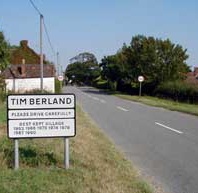
Viking Names
Timberland
Timberland, in the Langoe Wapentake of Lincolnshire, is likely an Anglo-Scandinavian hybrid coming from Old English timber ‘timber, trees; a wooden building’ and Old Norse lundr ‘a small wood’, thus giving the place-name the meaning ‘the grove where timber is obtained’. Alternatively, the first element may be Old Norse timbr ‘timber, trees, wood’.
Read More

Viking Names
Sutterby
Sutterby, in the Candleshoe Wapentake of Lincolnshire, comes from Old Norse sútari ‘a shoe-maker’ and Old Norse bý ‘a farmstead, a village’.
